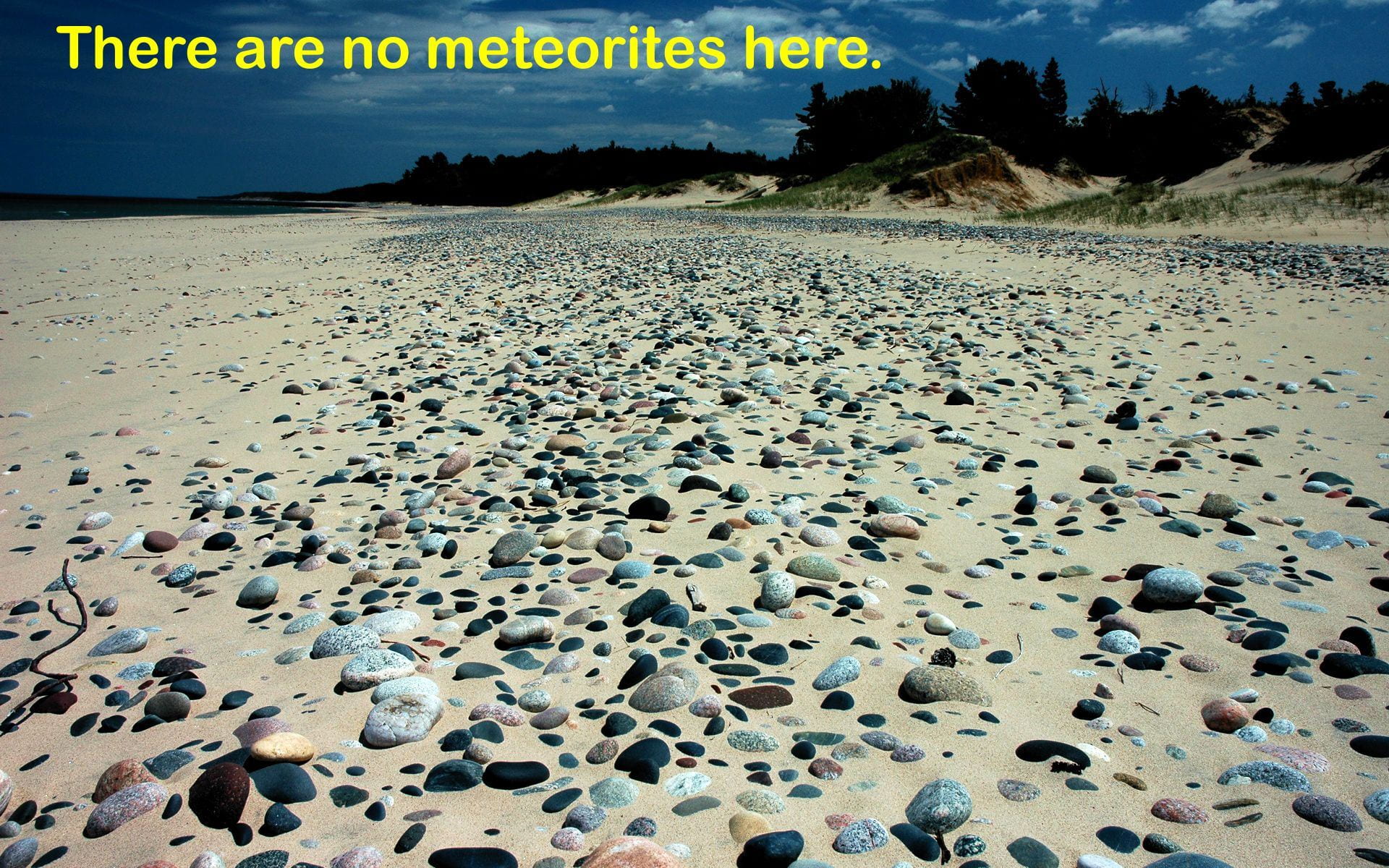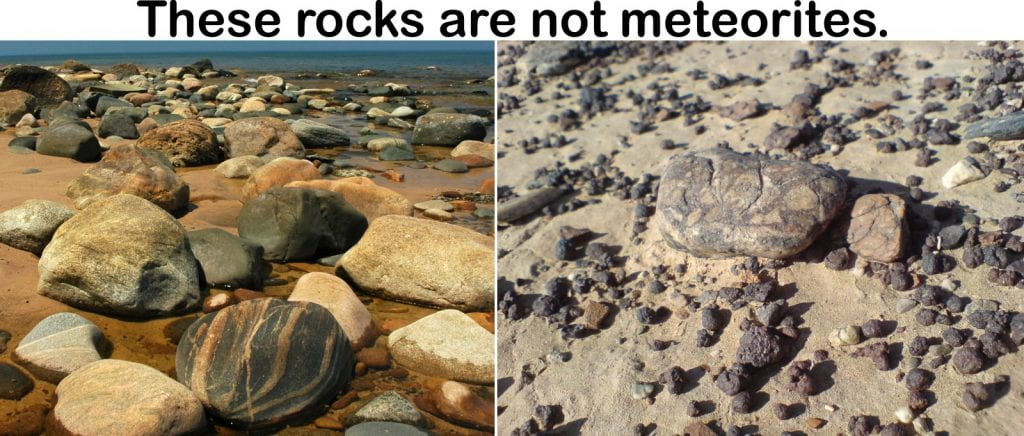Not on the beach
Meteorites are not found on beaches
If it is a rock and you found it on a beach, then it is not a meteorite. Or, if it is, nobody can identify it as a meteorite just by looking at it. If a stony meteorite landed in the water and later washed up on a beach it would have lost its fusion crust and regmaglypts as a result of abrasion against other rocks and sand by wave action. If it were an ordinary chondrite, it would likely have broken apart from rusting of the metal, particularly if it landed in salt water. If it survived as a rock, it would be all but impossible to identify as a meteorite just “by looking.” It would not look at all special, except maybe for some rusty spots. But who knows? Stony meteorites do land in the water but nobody has ever found and recognized one on the beach! It would require chemical or petrographic tests to prove that such a rock was a meteorite.
Experienced meteorite finders would never look for meteorites on a beach.
“Fossil meteorites” have been found in sedimentary rocks that formed at the bottom of a sea or ocean.



I am aware of only two meteorites, Southampton (pallasite, find, 2001, 3.58 kg) and Penouille (iron, IAB complex, find, 1984, 72.5 g), that were found on a beach. Neither is a stony meteorite. More info on Southampton and Penouille.